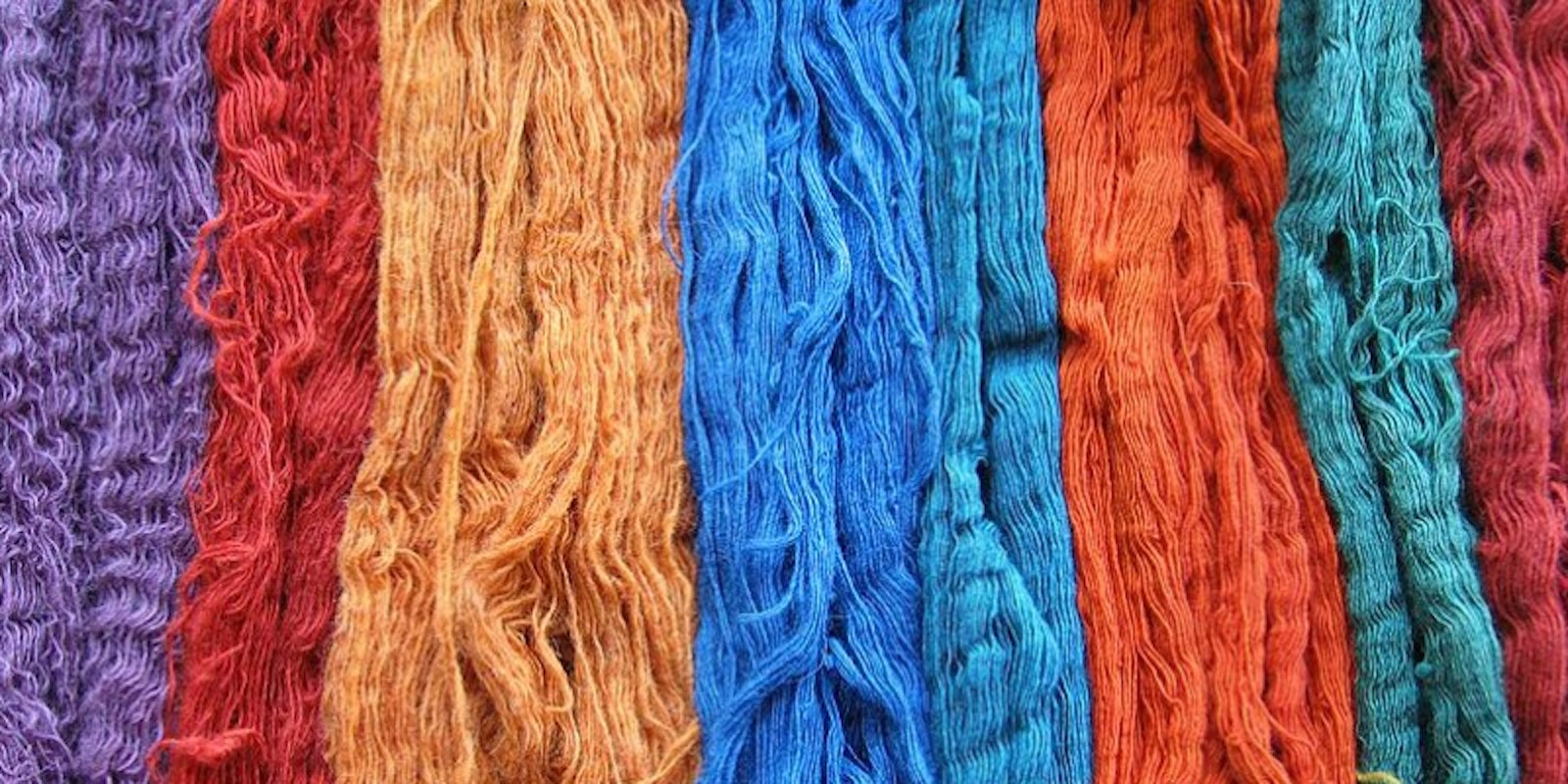In my past life as a museum professional, I was lucky enough to take some classes in conservation. Now a lot of times we hear conservation and think nature. While conservation of natural resources is important, it’s also important to conserve our artistic and historic resources as well—including textiles. Chances are you probably don’t have ancient Icelandic weaving hiding out in your house, or maybe some buffalo gloves from the 1800s, but you might have some naturally dyed items that need cleaning. Caring for naturally dyed cloth can be intimidating, but if you know what you’re doing you can enjoy your pieces for a very long time.
The first thing to know is that light is the enemy of natural dyes. Natural dyes will fade when exposed to sunlight especially, but even the lights in your home can cause discoloration. This doesn’t mean you need to hide your naturally dyed cloth away, but it does mean you should give a lot of thought into how you display and store these items.
Christina’s naturally dyed Turkish rug is hung on the wall, away from direct sunlight to help delay fading.
I have a beautiful handwoven, naturally dyed Turkish rug my sister-in-law gave me for Christmas a few years ago. I love this rug—it’s beautiful and just looking at it makes me happy—so I wanted to put it on display. I live in a house with a lot of natural light, there are big windows and skylights in every room of the house except for the hallway. So I had the rug hung at the end of the hall where it doesn’t see direct sunlight and where it’s protected from the lights of the living room. I get to see it every day, it’s not hidden away, and it’s kept safe from harsh light. The rug will eventually start to fade, but at this rate it will be years before it’s noticeable—longer if I take it out of rotation and keep it stored in a dark place every few years.
This brings us to storage. Cloth dyed naturally should be stored where it sees as little light as possible. I have a few scarves that are naturally dyed and they stay in my closet. They do see light there, but only for a few minutes at a time. If I wanted to protect them even more I could keep them in an opaque box on shelf in the closet. While I prefer to keep these items where I can see them, keeping them in boxes has an extra benefit of keeping them safer from dust, dirty, and stains while in storage.
So how do you clean a naturally dyed piece of cloth? Well, if you’re dealing with surface dirt or dust—my rug gets dusty at times—careful vacuuming works fine. Do it on a low setting, use the hose, and if you’re really worried, putting a mesh between the hose opening and the cloth and go slowly. The Canadian Conservation Institute (CCI) has great information on exactly how to do this—the information is designed for conservationists dealing with very old, very fragile textiles so you can adjust these instructions to fit the stability of your cloth.
What if you need to wash your cloth? Naturally dyed cotton towels, scarves, and other items used on a regular basis get dirty and need to be washed. In this case you need to make sure you have the right tools for the job. First, make sure the dye is colorfast. Once again the CCI has great instructions for how to carefully test for colorfastness using an eye dropper, blotting paper, and Mylar. Mylar is a material commonly used in conservation and can be found at sewing stores—I’d imagine if you’re not dealing with a Victorian petticoat you could use some hard plastic. Always test any detergents using this method before washing a naturally dyed cloth for the first time.
When you wash naturally dyed fabrics you’ll want to use a very gentle detergent such as Synthrapol. Synthrapol has a relatively low Ph and is designed to keep dye particles in place. Definitely test your fabric first with the Synthapol using the CCI method, but generally, it’s a detergent you can trust with your dyes. Because it prevents dye migration, it’s also recommended to use with anything fabric you’re afraid will bleed so it’s an excellent choice for your handwovens in general. Don’t directly apply stain removers or use heavy-duty detergents. While that might be fine for your everyday laundry, keep it in the cupboard when washing your naturally dyed fabrics.
I hope this helps anyone who’s been wanting to buy naturally dyed yarn or cloth but didn’t know quite how to care for it. Remember, people used naturally dyed cloth
Happy Weaving!
Christina


